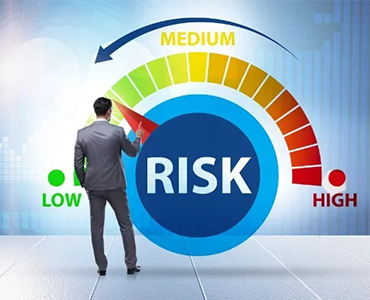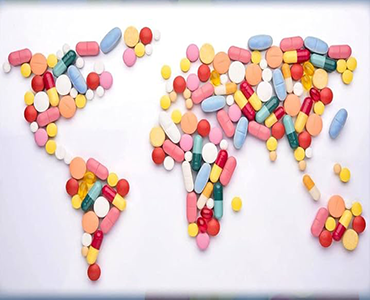The pharmaceutical industry follows a series of globally recognized standards. These standards guide the establishment and functioning of Quality Management...
The pharmaceutical industry follows a series of globally recognized standards. These standards guide the establishment and functioning of Quality Management Systems (QMS) to ensure that products are safe, reliable, and of the highest quality. Here are some of the key industry standards that pharmaceutical companies often integrate into their QMS frameworks:
1. ISO 9001:2015 – Quality Management Systems
Overview: ISO 9001:2015 sets the stage for a quality culture. It’s a universal guide that helps businesses of any size maintain reliable and efficient processes. In the pharmaceutical context, this standard ensures companies meet regulatory requirements and handle all aspects of production with the highest quality controls.
Key Features:
• Customer Focus: Ensures products meet customer and regulatory requirements.
• Leadership: Sets clear directions and engagement rules for company leaders.
• Continuous Improvement: Encourages regular evaluation and improvement of processes.
• Decision Making: Advocates for data-driven decisions, enhancing efficiency and productivity.
2. ICH Q10 – Pharmaceutical Quality System
Overview: ICH Q10 is the pharmaceutical industry’s dedicated guide for ensuring medicine quality. It emphasizes a systematic approach to guaranteeing product safety, effectiveness, and reliability, crucial for gaining market trust and regulatory compliance.
Key Features:
• Lifecycle Approach: Monitors the entire process from drug development to distribution.
• Process Performance: Keeps tabs on operations to ensure quality outcomes.
• Continual Improvement: Prioritizes regular updates and advancements in systems and processes.
• Risk Management: Identifies and controls potential risks to maintain product integrity.
3. Current Good Manufacturing Practice (cGMP)
Overview: cGMP represents the gold standard in manufacturing controls for pharmaceuticals, ensuring medicinal products’ purity, strength, and quality. It mandates that manufacturers adequately control their operations, resulting in consistent and high-quality outcomes for all batches.
Key Features:
• Quality Control: Enforces regular testing and quality checks.
• Proper Documentation: Requires detailed records of all procedures and operations.
• Facility Conditions: Sets standards for the cleanliness and functionality of production spaces.
• Personnel Qualifications: Ensures staff are adequately trained and competent.
4. FDA 21 CFR Part 210
Overview: FDA 21 CFR Part 210 regulation lays the groundwork for manufacturing practices in the pharmaceutical industry. It establishes the U.S. FDA’s baseline requirements for the methods, facilities, and controls used in manufacturing, processing, and packing drugs.
Key Features:
• General Provisions: Outlines the scope and applicability of current good manufacturing practices.
• cGMP Requirements: Sets the foundation for the detailed criteria found in subsequent parts, ensuring consistency and compliance.
5. FDA 21 CFR Part 211
Overview: FDA 21 CFR Part 211 builds on the foundations set by Part 210, offering a more detailed guideline on implementing cGMPs. It covers in-depth quality control, personnel roles, and documentation, crucial for maintaining high standards in drug safety and effectiveness.
Key Features:
• Comprehensive Regulations: Provides extensive rules for manufacturing, quality control, and distribution.
• Product Testing: Stipulates rigorous testing requirements to ensure drug batch uniformity and integrity.
• Recordkeeping: Mandates detailed documentation for every stage of production.
6. 21 CFR Part 11
Overview: In an era where digital records are fundamental, 21 CFR Part 11 regulates electronic records and signatures’ reliability and security. This regulation ensures that digital data is as trustworthy as traditional paper records, critical for accuracy and traceability in quality management systems.
Key Features:
• Electronic Records: Sets criteria for creating, modifying, maintaining, and transmitting electronic records.
• Electronic Signatures: Establishes standards for electronic signature reliability and equivalence to handwritten signatures.
• Data Security: Requires measures to protect electronic data integrity and confidentiality.
7. Pharmaceutical Inspection Co-operation Scheme (PIC/S)
Overview: The Pharmaceutical Inspection Co-operation Scheme (PIC/S) is an international program that brings together worldwide regulatory authorities to standardize and improve health and safety standards in drug manufacturing.
Key Features:
• Standardization of Inspection Procedures: PIC/S is instrumental in creating a uniform inspection standard across the globe, ensuring that all member countries are aligned in their practices.
• International Collaboration and Training: Under PIC/S, countries and regulatory authorities collaborate, sharing knowledge, and best practices.
Read More
Read Less






